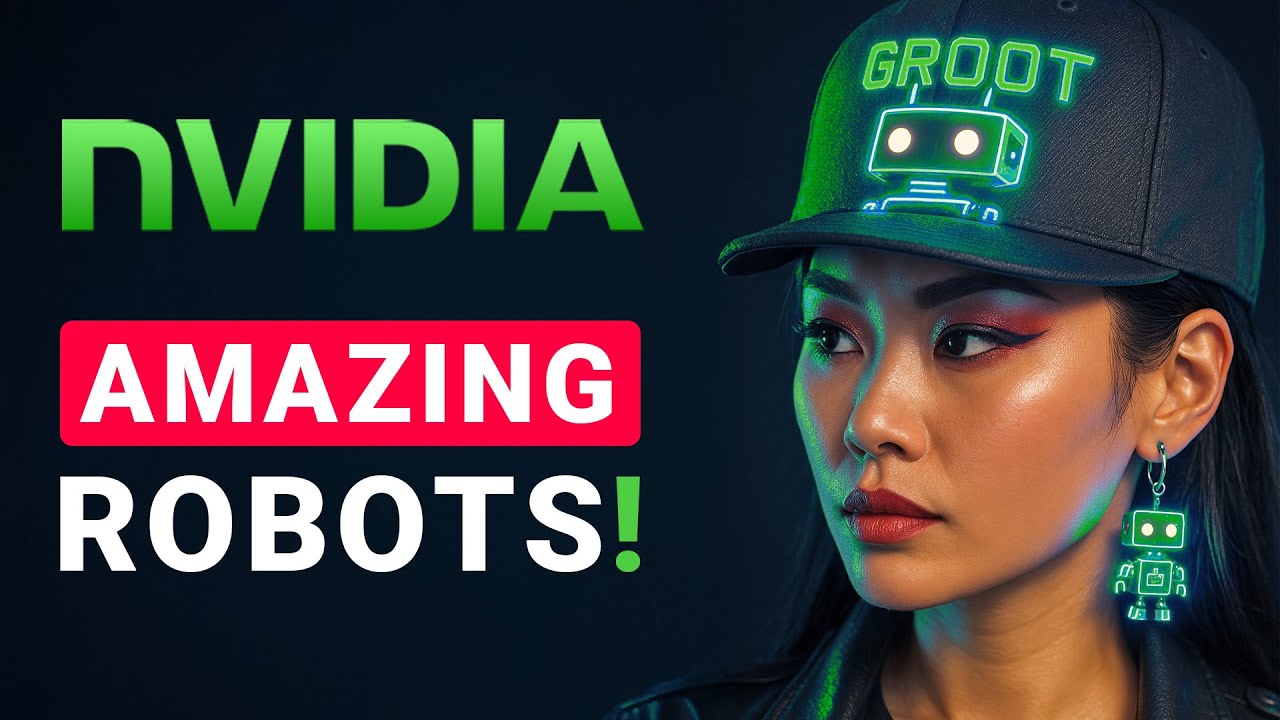The video introduces NVIDIA’s GR00T-N1, an open foundation model for humanoid robotics that utilizes digital simulations and AI to generate labeled training data efficiently, significantly enhancing the training process. It also features the Eagle-2 vision-language model, which improves task execution success rates, showcasing the potential for future advancements in robotics, although the technology is not yet ready for everyday tasks.
The video discusses a groundbreaking paper titled GR00T-N1, which introduces an open foundation model for humanoid robotics, aiming to revolutionize the field. The presenter highlights the significance of this development, especially considering that even major companies like OpenAI previously stepped back from robotics due to high costs and data challenges. Unlike training chatbots, which can leverage vast amounts of text data from the internet, training robots requires extensive labeled data from real-world demonstrations, which is time-consuming and labor-intensive.
To address the data labeling issue, NVIDIA employs a system called Omniverse, which creates a highly accurate digital simulation of the real world. This allows for the generation of labeled training data in a virtual environment, where robots can learn from simulated scenarios. The presenter emphasizes that this approach can produce an immense amount of realistic training data quickly, simulating years of real-world data in just a single day. This innovative method significantly reduces the limitations imposed by human time constraints in data collection.
The video also introduces a second “secret sauce” that involves using AI to label unlabeled videos from the internet. This AI analyzes video footage to extract useful information, such as camera movements and joint actions, effectively annotating each frame with relevant data. This capability allows the model to learn from real-world videos as if they were part of a video game, further enhancing the training process and expanding the range of data available for robotic learning.
Additionally, the presenter discusses a vision-language model called Eagle-2, which is integrated into GR00T-N1. This model enables robots to think on two levels: a slower, reasoning-based approach for planning and a faster, real-time system for executing motor actions. The combination of these two systems leads to a significant improvement in performance, with success rates jumping from 46% to 76% in task execution, showcasing the model’s potential to achieve results that would have previously taken years to develop.
While the advancements presented in GR00T-N1 are impressive, the video acknowledges that the technology is not yet a turnkey solution for everyday tasks, such as folding laundry. However, the model is open and accessible for further fine-tuning by researchers and enthusiasts, allowing for experimentation and adaptation to specific tasks. The presenter encourages viewers to explore the possibilities of this innovative model, highlighting the excitement surrounding the future of robotics and the potential for practical applications in various domains.
